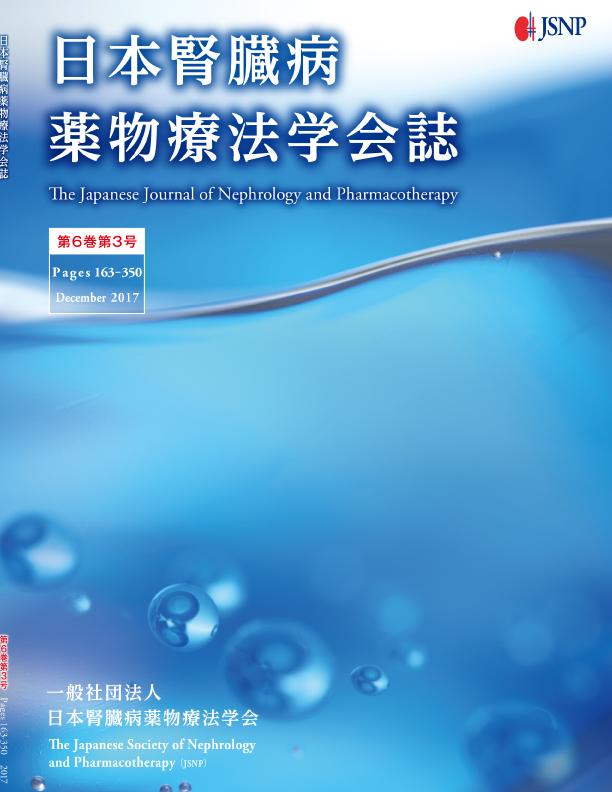Given its widespread incidence, there are many opportunities for healthcare professionals to have contact with chronic kidney disease (CKD) patients. In addition, dose adjustment is necessary when a renally-excreted drug is administered to CKD patients, and an accurate understanding of renal function is therefore necessary for appropriate dispensing as drug clearance will depend on renal function. Creatinine clearance (CCr) is a well-established measure of renal function over time, although the estimated quantity of Malpighian tuft filtration [estimated glomerular filtration rate (eGFR)] can be used to evaluate current renal function. For GFR estimation other than that proposed by the Japanese Society of Nephrology, results can be easily calculated, and even clinical practice is frequently used. However, many health-care institutions continue to use CCr as standard. Therefore, we evaluated the degree of understanding of renal function evaluation among pharmacists in Ehime to benefit the nephrology and pharmacotherapy study group in Ehime by raising the renal function evaluation skill level in the entire region. A questionnaire survey was distributed to all pharmacists at 129 hospitals that were registered with the hospital pharmacist society of Ehime and 558 community pharmacists registered with the Ehime pharmacist society.Specifically related to eGFR measurements, the understanding was that ml/min/1.73m2 and ml/min was a low value and, particularly for understanding of eGFR, the possibility of over-estimation of renal function was suggested. Given that Ehime pharmacists displayed a limited understanding of renal function evaluation, and to ensure safer medication use in the future, it is clear that further clarifying research by the study group of nephrology and pharmacotherapy in Ehime is necessary.
View full abstract
